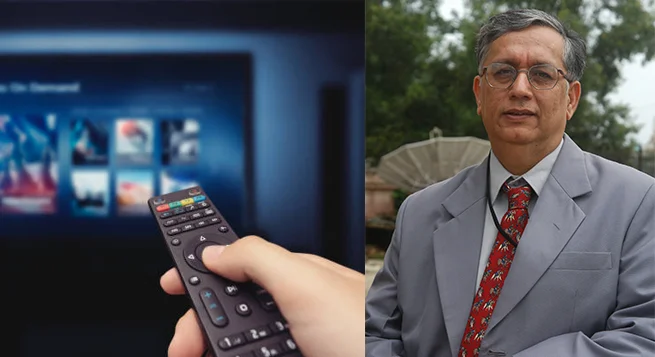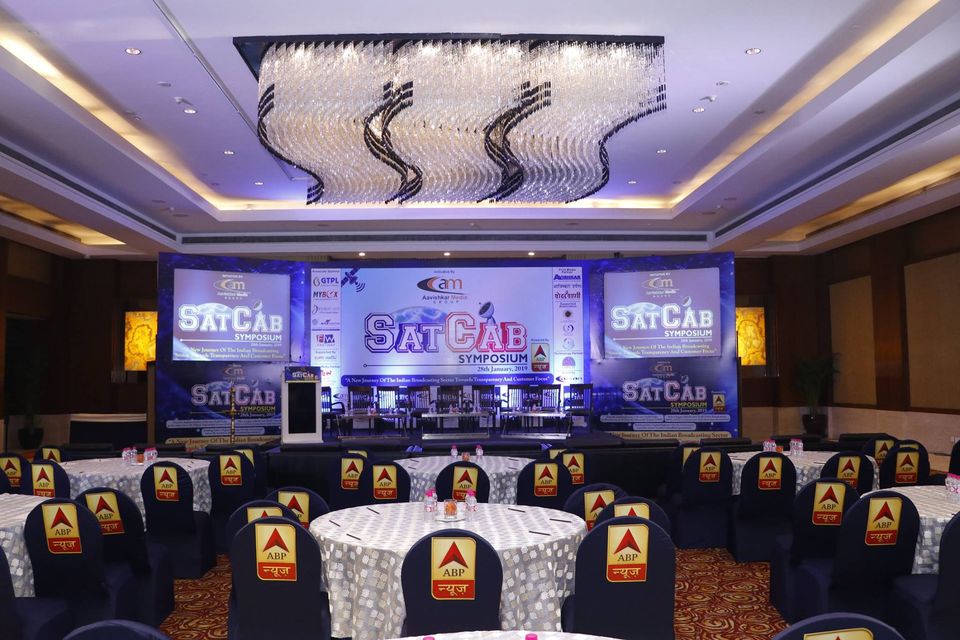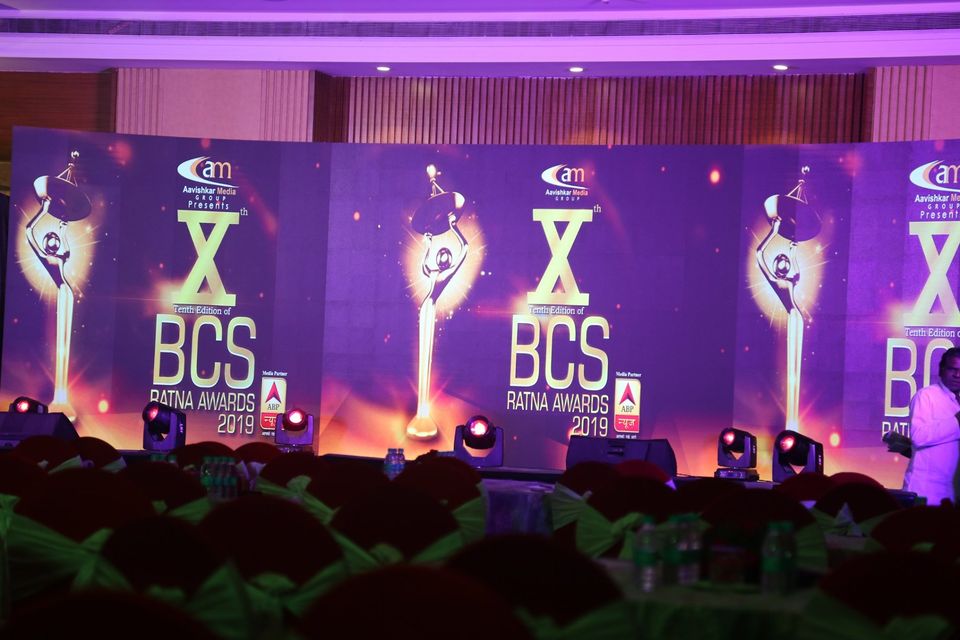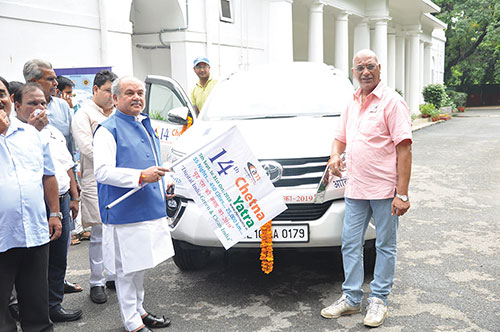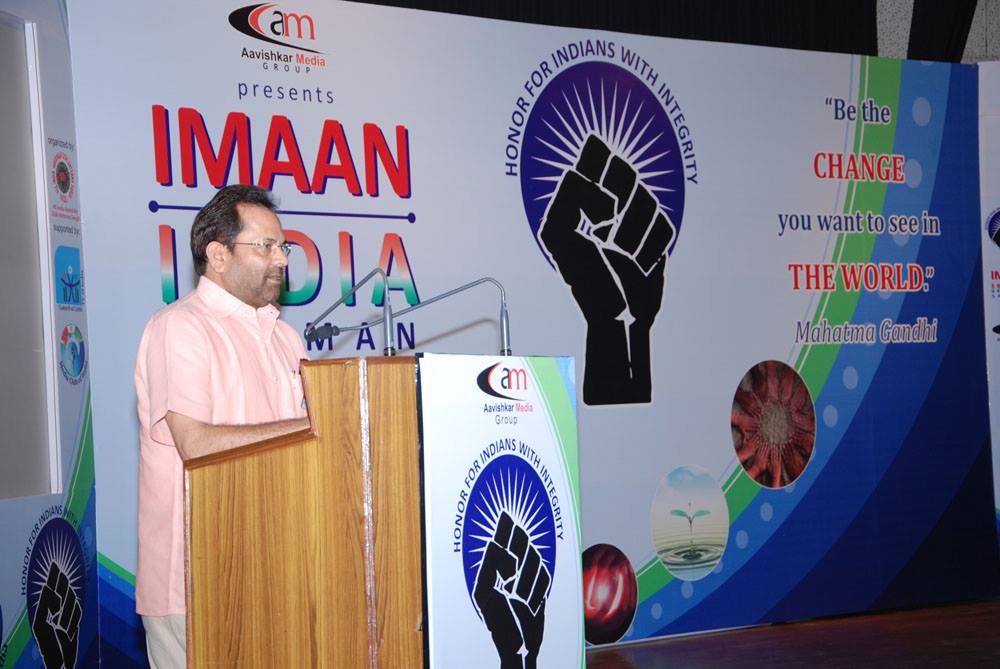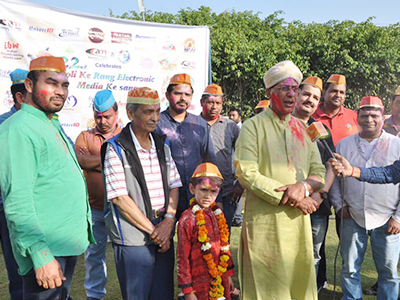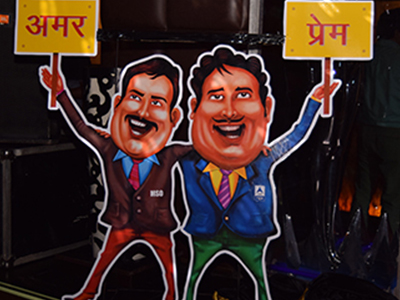While it is a truism that the march of technology outstrips regulation, India has been particularly tardy in framing technology-neutral regulations to ensure a level playing field for competing modes of communication media focusing on consumer needs.
Key critical legislative and regulatory developments in the past three decades are discussed below:
A. Prasar Bharti Act 1990
- The Prasar Bharati Act provided for establishing a Public Service Broadcasting Corporation, known as Prasar Bharati, and defined its composition, functions, and powers. The Act received the assent of the President of India on 12 September 1990 after being unanimously passed by Parliament. However, its implementation took place only on November 15, 1997.
-
The Act granted All India Radio(Akashvani) and Doordarshan “autonomy , ” previously under Government control. The objective was “independence” from Government control to Akashvani and Doordarshan to ensure the function reasonably, objectively, and creatively . The Act envisaged the formation of a Broadcasting Council to oversee the functioning of Prasar Bharati.
-
The Corporation’s main objective was to safeguard the freedom of expression, ensure diverse viewpoints are presented, and make public broadcasting more competitive and appealing to a broader audience. It also intended to provide the balanced development of broadcasting on radio and television.
COMMENTS
-
With 21 TV channels, Doordarshan has a gross unique viewership of 685 million viewers. All India Radio ( Akashvani ) has 420 radio stations with a listenership of 56 million on the AIR live streaming App. The Free Dish DTH platform of Prasar Bharati is prevalent in rural and now urban India, with an estimated 45 million viewers and 167 channels , including 77 auctioned channels. These figures make Prasar Bharati one of the largest regional Broadcasters .
-
The autonomy of Akashvani and Doordarshan has been hobbled by their inability to generate sufficient finances, and using that gap, the Ministry of Information and Broadcasting maintains tight control of both organisations.
-
Over time, the Government accepted in the late 1990s that the public broadcaster would not be able to provide the plurality of content required by viewers and opened up private broadcasting gradually from 2000 , which has thrived to day to become an INR 943 Billion/ US� 11.50 billion business , reaching out to nearly 200 million homes.
B. Supreme Court judgment in The Secretary, Ministry of Information and Broadcasting vs Cricket Association of Bengal dated 09.02.1995 -1995 AIR 1236/1995 SCC (2) 161.
- The Supreme Court held: ‘ Airwaves or frequencies are public property . Their use had to be controlled and regulated by a public authority in the interests of the public and to prevent the invasion of their rights.
- The Government should immediately establish an independent, autonomous public authority representative of all sections and interests in society to control and regulate the use of the airwaves.
- The Broadcasting media should be under the control of the public as distinct from the Government. This is the command implicit in Article 19(1)(a).”
- “To ensure plurality of views and opinions and a fair and balanced presentation of news and public issues, the broadcast media should be placed under the control of the public, i.e., in the hands of statutory corporations or corporations, as the case may be.”
COMMENTS
This epoch-making judgment cleared the way for autonomous broadcast regulation. Unfortunately, even 30 years later, the mandate of the Supreme Court to set up an independent and autonomous Broadcast Regulatory Authority remains a mirage with no chance of actualisation.
The judgment allowed the advent of private television broadcasting in India, which was, till then, the preserve of Doordarshan. It allowed private channels to acquire rights, and revenue generation for sports bodies increased, leading to better infrastructure, player payouts, and overall development of the sporting ecosystem, especially cricket.
Additionally, the competition introduced by private channels drove plurality, innovation, and improved broadcast quality, benefiting viewers.
Cable Network Regulation Ordinance- 29.09.1994 & Cable Network Regulation Act 1995 – 25.03.1995
- Parliament approved the passage of the Cable Television Network Regulation Act 1995 to regulate the ‘haphazard mushrooming of Television Networks’ . The content was sought to be regulated by introducing a Programme and Advertisement Code.
Key features of the Cable Act are:
- Compulsory Registration of all Cable Operators was mandated to ensure responsibilities and obligations in respect of the quality of service both technically as well as content -wise, use of materials protected under the copyright law, exhibition of uncertified films, and protection of subscribers from anti -national broadcasts from sources inimical to national interests”.
- Content Guidelines Cable operators (and Broadcasters) must comply strictly with the Programme and Advertisement Code. This was aimed to “encourage the broadcast of programs that promote Indian culture, heritage, and values. This sought to counter the influence of foreign cultures and strengthen national identity”.
- The Advertisement Code was created to “prevent misleading and deceptive advertisements: The Code ensured that advertisements were truthful and presented accurate information about the products or services being promoted .”
- Must Carry Provisions: The Act provided for compulsory carriage of Doordarshan channels. (With Effect From 01.09.2000)
-
Consumer Protection: Consumer complaints must be addressed, and Cable Operators must follow service quality norms.
-
Penalties and Fines- In the case of proven violations, penalties and fines could be levied, including imprisonment for criminal offences. (This provision has been amended from 12.10.2022 to allow for compliance and regulation through administrative means rather than registering criminal offences)
COMMENTS
- Though the Cable Act has been amended periodically , it has proved inadequate to regulate Digital and Internet -based media and other forms of distribution like Direct -to-Home, which is regulated by Guidelines issued under the Allocation of Business Rules 1961.
- Broadcasters , too, have escaped the rigours of formal regulation as they were being governed by Downlinking and Uplinking Regulations , which have proved inadequate to deal with Content Code Regulations . Actions taken by the Ministry of Information and Broadcasting through the Inter -Ministerial Committee to suspend programmes or channels were challenged in the Delhi High Court with favourable verdicts for broadcasters.
- Though the Cable Act was amended to give TRAI regulatory powers to fix Tariffs , prescribe Interconnection agreements , and promulgate Quality of Service Regulations in 2004, TRAI could not ensure full implementation due to the inability to monitor and enforce its Regulations effectively , leading to myriad disputes in TDSAT.
C. Telecom Regulatory Authority of India- Independent Telecom Regulator 25.02.1997
- The Telecom Regulatory Authority of India Act, 1997 (TRAI Act) was enacted on 28th March 1997 with the primary intention of:
- Establishing an independent body to regulate the telecommunication services sector in India.
- Promoting and ensuring orderly growth of the telecommunication sector, including fostering competition, encouraging technological advancements, and protecting consumer interests.
- Regulating telecommunication services: This encompasses Tariffs, Interconnection agreements, Quality of service (QoS) Regulations, and Dispute resolution mechanisms.
-
Protecting Consumer Interest: TRAI is mandated to protect the interests of both consumers and service providers by ensuring fair competition, transparency, and affordability of services .
-
Adjudicating disputes: The Telecom Disputes Settlement and Appellate Tribunal (TDSAT) was established on March 21, 2000, by amendment of the TRAI Act to handle disputes between service providers and consumers.
COMMENTS
- TRAI has played a seminal role in the orderly growth of the Telecom Sector, which today has ~ 1.18 billion wireless subscribers and 850 million broadband subscribers. It has a market capitalisation of INR 5.3 trillion (USD 65.6 billion). Its contribution to GDP is estimated at ~ 8%.
- In the 26 years, it has effectively managed the scarce spectrum resource through auctions and other mechanisms, ensuring fair access for all players and preventing monopolies. This facilitated the growth of mobile telephony and broadband services.
- TRAI established consumer protection regulations , including tariff transparency, portability, and dispute resolution mechanisms. This empowered consumers and improved their experience.
- Promoting technological advancements: TRAI encouraged technological innovations in the telecom sector by setting standards, facilitating trials, and promoting new technologies like 3G, 4G , and 5G . This has helped India keep pace with global advancements.
- TDSAT ,being a specialised forum, has helped resolve complex issues. Its judgments have set important precedents, though a backlog of cases is familiar to all Tribunals.
D. Broadcasting Bill 1997 -30.07.1997
- Following the directives of the Supreme Court in February 1995, the Government introduced the Broadcast Bill 1997. The explanatory note stated, ” Many satellite television channels are foreign entities, and their programmes are uplinked from outside the country without any regulation through the laws of our land. At the same time, Indian entrepreneurs and Indian companies are not permitted to own either Radio or Television stations at present.
- The Public Service Broadcaster (Doordarshan) alone will not be able to meet the needs and urges of the people in terms of the variety and plurality of programmes required in different regions by different sections of society in our vast country.
- The Bill aims to establish a Broadcasting Authority to facilitate and regulate Broadcasting Services in India so that they become competitive in terms of quality of services, cost of services and use of new technologies, apart from becoming a catalyst for social change, promotion of values of Indian culture and shaping of a modern vision.”
COMMENTS
- Though this was an attempt to regulate Broadcasting in terms of Supreme Court 1995 directives and create a level playing field for Foreign and Indian Broadcasters , the Bill was never enacted into law .
- It fell through due to opposition to efforts by the Government to rein in foreign channels by capping foreign equity to 49%, a proposal to impose cross-media restrictions , and perceived threats by activists that the Bill would curb freedom of expression.
E. Fali Nariman Report on Convergent Regulation 25.08.2000
- In May 2000, the Ministry of Information and Broadcasting proposed to the Fali Nariman Committee set up by the Group on Telecom and IT Convergence to set up one Unified Regulatory Authority for licensing and other related issues for the Infotech, Broadcasting and Telecom sectors.
- However, the Fali Nariman Report on Convergence 2000 feared that a Government-controlled Regulatory Body could lead to excessive state control over media. Instead, it suggested the formation of a single independent and autonomous super-regulator called the Communication Commission of India, which would issue unified licences in various categories.
- The report emphasised the importance of the flexibility of self- regulation content law with no political interference. The report aimed to “ promote the national objective of a robust infrastructure for an information-based society, and effort has to be made on the convergence of Telecommunication, including Data Communication and Broadcasting activities, since technological changes in these areas tend to overlap and converge increasingly.
COMMENTS
- The Committee’s revolutionary recommendation for an autonomous super -regulator and a technology-neutral regulation to encourage innovation . This led to the issue of Unified Licenses in 2003 in terms of the National Telecom Policy 1999, paving the way for converged services.
- The report advocated for a light -touch approach to content regulation, emphasising self -regulation by the industry while safeguarding national security and public interest. This approach has evolved to statutory recognition in the Cable Act 1995 and the draft Broadcast Regulation Bill 2023 .
- Its objective to create a robust infrastructure for an information- based society was two decade s ahead o f its time. The report led to introducing the Convergence Commission of India Bill 2001.
F. Convergence Commission of India Bill August 2001
- The Convergence Bill was intended to set up a “well -conceived structural mechanism to deal with the emerging scenario of convergence in the Telecom., IT and Broadcasting sectors as a super regulator.
- The Bill would have repealed five existing Acts- Indian Telegraph Act-1885, the Cable TV Networks Regulation Act 1995, the Indian Wireless Telegraphy Act-1933, The Telegraph Wires (Unlawful Possession) Act 1950 and the Telecom Regulatory Authority of India Act 1997. (Note: The Telecommunication Bill 2023, passed by Parliament on 21 .12.2023, will lead to abolishing the three old Telegraph Acts. When finalised and passed, the Broadcast Regulation Bill 2023 will repeal the Cable Network Regulation Act 1995. The TRAI Act 1997 and TDSAT introduced by the amended TRAI Act in 2000 will continue.)
- The CCI would have been charged with diverse responsibilities, such as developing the communication sector in a competitive environment and in consumer interest, making available communication services at an affordable cost to all, establishing a modern and effective communication infrastructure, encouraging the introduction of new technologies, promoting a level playing field for all operators etc.
- Content regulation and assignment of the spectrum were also to be given to CCI.
- An essential feature of the legislation was a flexible, technology- neutral, and Industry-friendly licensing regime, allowing service providers to offer various Services within each license category.
- The legislation would also have set up a Communications Appellate Tribunal to hear appeals against the Regulatory or its Adjudicating Officers.
COMMENTS
- The Joint Parliamentary Committee thoroughly examined and approved the Bill despite fierce opposition by Broadcasters and Industry bodies.
- However, the vested interests of Broadcasters , telecom operators, incumbent ministries and regulators led to a revolutionary move being dropped and has never been debated again for the past 20 years.
- Efforts to revive it in the recent past failed for the same reason s it failed to be enacted into law in 2001.
- In any case, with the introduction of the passage of the Telecommunication Bill by Parliament on December 21 , 2023, and the circulation of the draft Broadcast Regulation Bill on 09.11.2023, it is pretty clear that the Convergence Commission of India Bill has now been effectively killed off .
G. Trai As Broadcast Regulator -09.01.2004
- As the Convergence Bill 2001 got caught in inter-ministerial rivalry and Industry opposition, the Government appointed TRAI as a “Broadcast Regulator” until the Convergence Commission of India or a separate Broadcast Regulatory Authority was formed.
- The Government of India nominated the Telecom Regulatory Authority of India (TRAI) as the Broadcast Regulator on January 9 2004, invoking the proviso to Section 2 (1) (k) of the TRAI Act…
- The Press Information Bureau press release on 09.01.2004 stated that “TRAI will now be responsible for regulating all aspects of Broadcasting , including licensing, spectrum allocation, and content regulation.”
- The decision to appoint TRAI as the Broadcast Regulator was made after careful consideration of all the options available.
- TRAI is an independent body with a proven record of regulating the Telecommunications sector. It is also well -equipped to handle the challenges of regulating the Broadcasting sector , which is becoming increasingly complex and competitive.”
- Broadcasters fiercely opposed the nomination of TRAI to be the broadcast regulator. Their consistent argument since 2004 has been that TRAI is a carriage regulator and cannot regulate Broadcasters as content is “protected under Article 14 and Article 19 (1) (a)” of the Constitution”.
- They fought court cases thrice in 2005, 2017 and 2020 in the Delhi/Madras and Bombay High courts. Still, they lost every time, with the Supreme Court upholding the Delhi and Madras High Court decisions and the Broadcasters withdrawing their appeal in the Supreme Court in 2022 against the Bombay High Court decision in 2021.
COMMENTS
- In the past 20 years, TRAI has done its best to maintain a level playing field between competing interests of Broadcasters, Operators, Multi System Operators, DTH Networks , and viewers.
- It issued various Tariff Orders /Interconnection Regulations and Quality of Service Regulations in analogue and digital regimes to ensure fair pricing /standard contracts and quality service norms for service providers and consumers.
- TRAI successfully piloted the Digital Addressable System between 2012 and 2020 despite many legal challenges from Broadcasters .
- It has helped DTH Networks and MSOs grow after the introduction of NCF and the issue of the New Tariff Order in 2017 and later amendments.
- Efforts to regulate OTT have failed due to inter -ministry quibbles and court orders.
- In a recent Tribunal order ( in an appeal filed by AIDCF vs Disney Star (Broadcasting Petition No 217/2023 ) , the TDSAT held on 23.10.2023 that “prima facie , OTT platform is not a TV channel , nor is the respondent requiring any permission or a licence from the Central Government.”.
H. Broadcasting Services Regulation Bill 2007- May 2007
-
The Broadcasting Services Regulation Bill 2007 was intended to ‘provide for the establishing an independent , autonomous public authority to be known as the Broadcast Regulatory Authority of India to regulate and facilitate the development of Broadcasting Services in India to encourage Broadcasting Services to be responsive to the educational, developmental, social, cultural and other needs and aspirations of people and include in their programming public service messaging and content.
- The Bill was to provide for:
-
Licensing: No broadcasting service can operate without a license.
-
Cross-media Ownership: Restrictions on cross-media ownership to prevent the creation of monopolies.
-
Foreign Investment: Limits on foreign investment in Broadcasting companies.
-
Programme Code: A stricter code for programme content, including restrictions on advertising and violence.
-
Compulsory Public Service Broadcasting: Mandatory Broadcasting of public service content.
COMMENTS
- In a sharp departure from the directions of the Supreme Court in the CAB 1995 judgment, the Fali Nariman Report of 2000 and the draft Convergence Commission of India Bill 2001, the New Bill made it clear that the Central Government intended to retain all key powers which should have transferred to Broadcast Regulatory Authority of India as per Supreme Court directive.
- Though there were significant deviations from the SC directives 1994 and the intent of the Convergence Bill 2001, even so, the 2007 Bill was a serious effort aimed at consolidated regulation of the Broadcast Media Industry . Yet it failed to pass legislative muster. It took successive governments 16 years to develop a revised version of the Broadcast Bill in 2023 .
- Sports Broadcasting Signals (Mandatory Sharing with Prasar Bharati Act) 2007
This provided for:
- Mandatory Sharing: Content rights owners and Broadcasters must share live signals of sporting events of national importance with Prasar Bharati, the public broadcast.
- Free-to-air Access: Prasar Bharati must re-transmit the shared signals on its terrestrial and DTH network.
- Sports Events of National Importance: They will be defined by the Central Government.
- Prior Notice: Rights owners and Broadcasters must inform Prasar Bharati about upcoming events at least 45 days before the telecast.
- The Broadcasters filed writs alleging violation of their fundamental rights, but the Supreme Court upheld the Act with modifications in Union of India vs BCCI: Civil Appeal No. (S) 10734-10735 of 2017 dated 22.08.2017
- The Supreme Court held that “Under Section 3 of the Sports Act, 2007, the live feed received by Prasar Bharati from content rights owners or holders is only for re-transmission of the said signals on its own terrestrial and DTH networks and not to Cable Operators to enable the Cable TV operators to reach such consumers who have already subscribed to a cable network.”
COMMENTS
- Doordarshan is still one of the world’s largest terrestrial Broadcasters . Also, its Free Dish has raced to 45 million viewers. With an obligation to share advertisement revenue with the rights holders, it is currently a win-win situation for Broadcasters to share significant sports events using the reach of Doordarshan and Free Dish , which viewers and advertisers would otherwise miss.
Headend In The Sky Guidelines 26.11.2009
- Headend-in-the-Sky (HITS) is a Broadcasting technology where TV channels are processed and uplinked from a satellite hub instead of terrestrial headends.
- This allows for the efficient distribution of TV content across a wide geographical area. This is especially useful in dark cable areas where fibre and cable networks are complex to launch as they are far-flung or hilly. The Guidelines were expanded in 2020 to allow for infrastructure sharing.
COMMENTS
- At present, there is only one active HITS operator –NXTDIGITAL, supplying 640 SD/HD channels to approximately 2.5 million subscribers. HITS has excellent potential in cable dark areas, but Prasar Bharati Free Dish is steadily occupying that space.
I. Downlinking Guidelines
- Broadcasters are regulated by Downlinking and Uplinking Regulations since 2000. These Regulations provide specific guidelines on technical parameters, including frequencies allotted and spectrum granted. In the past two decades, the Regulations have been consolidated twice as under:
A. 2011 Consolidated Guidelines for Broadcasters:
- These Guidelines consolidated piecemeal guidelines issued from 2000 onwards into one set of directions.
- Eligibility: Only companies registered under the Companies Act 1956 could apply for downlinking licenses.
- Foreign Equity: Foreign equity in the applicant company was capped at 49%.
- News Channels: The net worth requirement for setting up a news channel was Rs. 5 crores.
B. 2022 Consolidated Guidelines for Broadcasters
- Online Applications: The Guidelines introduced an online application system for all permissions.
- Eligibility: Expanded to include LLPs registered under the Limited Liability Partnership Act, 2008.
- Foreign Direct Investment: Streamlined FDI Regulations.
- Net Worth: Increased net worth requirement for news channels to Rs. 20 crores.
- Public Service Broadcasting: We introduced mandatory public service broadcasting for 30 minutes daily on national importance and social relevance themes.
- Teleports: Simplified process for setting up teleport and teleport hubs.
COMMENTS
- From a single Doordarshan channel in the early 1990s to 905 TV channels today, the Broadcasting Industry is thriving and trying to overcome challenges from digital media and streaming platforms.
- The consolidated Downlinking and Uplinking Guidelines have been welcomed mainly by Broadcasters but have been issued under the powers granted to the Ministry of Information and Broadcasting by the Allocation of Business Rules 1961, enabling the Ministry to formulate policies, guidelines, and Regulations for private Broadcasters and oversee compliance with these Regulations .
- However, though there have been no serious legal challenges to the Ministry of Information and Broadcasting’s powers under Allocation of Business Rules 1961 , this perceived infirmity of regulating broadcasters through the issue of guidelines will be covered under the saving clauses of the new Broadcast Bill 2023.
J. Draft Amendments to Cable Act 15.01.2020
- The draft amendments to the Cable Act 1995 were released for public response. It proposed 28 amendments to the Cable Act, sought to eliminate obsolete sections, and provided contemporary definitions of critical clauses. The amendments were intended, among others, to:
- Tighten programme content control and advertising norms on Broadcasters.
- It mandated graded penaltiesfor violations by Broadcasters and DPOs.
- It introduced contemporary definitions of Cable Operator/MSO/HITS/IPTV/Ground, Platform, DTH Satellite Operator, etc.
- It revised the definition of Addressable Systems.
- It gave modalities to grant the Right of Way to Operators.
COMMENTS
- The legal framework was sought to be aligned with modern Broadcasting technologies and practices. The amendments were also intended to provide more explicit Regulatory guidelines and compliance mechanisms for Broadcasters and Network Operators.
- Though some amendments to Cable Rules have been made since 2020 , the amendments to the Cable Act 1995 have been scrapped and incorporated in the draft Broadcasting Bill 2023.
The Information Technology (Intermediary Guidelines and Digital Media Ethics Code) Rules, 2021
Key Features of Content Moderation as per IT Rules, 2021:
- The Information Technology (Intermediary Guidelines and Digital Media Ethical Code) Rules, 2021, or IT Rules 2021, contained several provisions related to content moderation by online platforms/digital media like YouTube, Facebook, Book, Instagram, etc. Some key features:
- Prohibited Content: Content that depicts child pornography, explicit sexual activity, or abuse of children.
- Content threatening national security, unity, defence, relations with foreign countries, or public order.
- Contents grossly offensive or harmful to public decency.
Moderation Mechanisms:
- Platforms must appoint a grievance officer to handle user complaints about objectionable content.
- Platforms must adopt reasonable efforts to identify and remove prohibited content.
- Platforms must allow users to be heard before taking down content.
Compliance Measures:
- Platforms with more than 5 million users in India to comply with the IT Rules, 2021.
- Non-compliance may lead to penalties, including blocking access to the platform in India.
Legal Challenges and Outcomes:
- The IT Rules 2021 have been challenged in various High courts on several grounds. Critics argued that terms like “grossly offensive “ and ” harmful to public decency” are vague and open to subjective interpretation, potentially leading to censorship of legitimate content. All challenges have been transferred to the Supreme Court. The stay orders issued by High Courts continue to be in effect.
NOTE 1. : Amendments notified on October 22, 2022.
- In further amendments, the government directed that intermediaries must ensure compliance with Rules and Regulations, privacy policy, and user agreement and make reasonable efforts to prevent users from creating, uploading, or sharing prohibited content. They must also respect the Constitutional rights of users.
- The Central Government will establish one or more Grievance Appellate Committees to hear appeals against the decisions of grievance officers.
NOTE 2: Further amendments were notified on April 6 2023
- Fact Check Unit The rules authorise a government-controlled “fact- check unit” empowered to flag online content related to the government as ” fake or misleading .” Platforms must remove such content upon receiving a notice from the unit.
- Definitions of harmful content: Categories under “harmful content “ have been further specified.
COMMENTS
- The Information Technology Rules were amended in 2021 to address public concerns around transparency, accountability, and user rights to digital media.
- They were intended to provide soft -touch facilitative regulation for digital platforms, ensuring viewer interest protection.
- However, over the next two years and despite High Courts staying some contentious provisions, the Government has tightened direct oversight of digital media, which has seen a veritable explosion of viewership post -lockdown while retaining the three-tier self – regulatory framework.
Trai Consultation on Regulating Converged Technologies 30.01.2023
- The Department of Telecommunications had issued a reference to TRAI dated 20.10 2021 seeking recommendations for the Convergence of Carriage of Broadcasting and Telecommunication Services.
- A revised reference from the Department of Telecommunication dated 20.10.2022 asked TRAI under Section 11 of the TRAI Act to provide recommendations for:
(a) Amending the licensing regime to enable the convergence of carriage of Broadcasting Services and Telecommunication Services and
(b) Establishing a Unified Policy Framework and Spectrum Management regime for Broadcasting and Telecommunication Services carriage.
- In its reply on 04.10.2022 to the reference by TRAI, the Ministry of Information and Broadcasting, relying on its powers under Allocation of Business Rules 1961, stated that it was “in the process of amending the Cable Television Network Regulation Act “to bring all different Broadcasting carriage channels under its ambit to holistically address all institutional regulatory and legal aspects of Broadcasting under a unified Act”
- In the Consultation Paper in January 2023, TRAI queried whether “There is a need for a comprehensive/converged legal framework (separate Comprehensive Code) to deal with the convergence of carriage of Broadcasting Services and Telecommunication Services . If yes, provide details of the suggested comprehensive code.
- The Indian Broadcasting and Digital Foundation representing Broadcasters, in its response to the Consultation Paper, demanded that the regulatory framework for content (within the confines of Article 19(2) of the Constitution of India) be distinct and separate from the regulatory framework for carriage. “For clarity, the Regulatory framework for carriage should not result in impinging on rights guaranteed under Articles 19(1)(a) and 19(1)(g) of the Constitution of India.”
- The AIDCF representing large MSOs demanded that “ OTT applications providing video services shall also be brought under the purview of CTN Regulations , 1995 for enabling the proliferation of an equitable regulatory framework”.
COMMENT
- Unsurprisingly, due to the divergent stands of the two key ministries and the powerful Telecom lobby, the TRAI consultation on converged regulation has been placed in a deep freeze.
- As early as 09.11.2020,the Allocation of Business Rules 1961 was amended to enable MIB to regulate Digital Online Media .
- The Draft Broadcast Bill now brings the content of OTT Regulation and all forms of Digital Media within the regulatory control of the Ministry of Information and Broadcasting .
L. Broadcast Services (Regulation) Bill 2023
- Unified Broadcast Regulation-
- The Press Information Bureau,in its media release dated 09.11.2023, stated:
- The Cable Television Networks (Regulation) Act of 1995 has been in effect for three decades, serving as the primary legislation overseeing content on linear broadcasting , including cable networks.
- However, the broadcasting landscape has undergone significant changes in the interim. Technological advancements have introduced new platforms such as DTH, IPTV, OTT, and various integrated models.
- With the digitisation of the broadcasting sector, especially in cable TV, there is a growing need to streamline the regulatory framework. This involves ensuring ease of doing business and enhancing adherence to the Programme Code and Advertisement Code by the Broadcasters and Distribution Platform Operators .
- Recognising the need for a more cohesive approach, the fragmented regulatory framework must be replaced with a new, comprehensive law. The draft Bill provides a consolidated framework to regulate the broadcasting services in the country . The Bill streamlines regulatory processes and extends its purview to cover Over-the-Top(OTT) content and Digital News . It introduces contemporary definitions and provisions for emerging technologies .
- It seeks to provide for Content Evaluation Committees and a Broadcast Advisory Council for self -regulation , different Programme and Advertisement Codes for other Broadcasting (and) Network Operators,
- It (will introduce ) accessibility measures for persons with disabilities,
- It provides for statutory penalties and equitable penalties .
COMMENTS
- The Broadcasting Services (Regulation) Bill, 2023 , is a reasoned response to the evolving technological landscape of the Broadcasting Industry .
- Digital Media is regulated through the Digital Ethics Code of the Information Technology Rules 2021. The Bill seeks to unify the existing Regulations applicable to the Broadcasting Industry under one legal framework.
- This consolidation is crucial for streamlining regulatory processes and ensuring regulatory consistency across different Broadcasting mediums, including OTT platforms, digital media , and traditional broadcast networks .
- Suffice it to say that the Bill is very ambitious in regulating content in all possible forms, including legacy digital and future delivery forms like Virtual Reality and even the fast -developing AI.
- A detailed analysis of the new Bill is provided in a companion article.
Telecommunications Bill, 2023
- The Telecommunications Bill, 2023,was passed by Parliament on December 21, 2023. It seeks to regulate activities related to telecommunication. It repeals the Indian Telegraph Act of 1885, the Indian Wireless Telegraphy Act of 1933, and the Telegraph Wires (Unlawful Possession) Act of 1950. It also amends the Telecom Regulatory Authority of India (TRAI) Act, 1997.
Key Highlights :
- Prior authorisation (licences abolished)from the Central Government will be required to
(i) provide telecommunication services,
(ii) establish, operate, maintain, or expand telecommunications networks, or
(iii) possess radio equipment.
- OTT Excluded: The Bill excludes Over-the-Top (OTT) platforms like WhatsApp and Signal from telecom authorisation but retains scope for future regulation as the definition of telecommunications is left42 open-ended. The Ministry of Electronics and Information Technology (MeitY) will continue regulating OTT until the Digital India Bill(intended to replace the Information Technology Act 2000) is tabled in the new Parliament in 2024.
- Spectrum Allocation: The Bill Introduces administrative spectrum allocation for entities like defence, satellite services like Broadcasters/DTH Networks and HITS Operators, and auctions for others.
- Powers of interception and search: Messages or a class of messages between two or more persons may be intercepted, monitored, or blocked on specific grounds. Such actions must be necessary or expedient in the interest of public safety or public emergency.
- Cybersecurity & Control of Telecom Networks: The Bill empowers the Government to take control of networks in emergencies or for national security and to set up cybersecurity rules.43
- Spam & Consumer Protection: The Bill provides user consent for receiving specific messages, empowers users to report malware, and tackles spam calls.
- Reduced Penalties & SIM Verification: The Bill caps penalties on telecom operators and mandates biometric verification for SIM issuance to curb misuse.
- Appointments to TRAI: The Bill amends the TRAI Act to allow individuals with
(i) at least30 years of professional experience to serve as the Chairperson and
(ii) at least 25 years of professional experience to serve as Members
COMMENTS
- The Telecommunication Bill 2023 has been hailed by the industry as a very forward -looking bill. The apparent exclusion of OTT platforms and administrative grant of Spectrum in specified cases has been generally welcomed.
- However, civil rights experts and organisations have expressed alarm at the perceived and possible denial of freedom of expression on clauses relating to interception, monitoring, and blocking of messages.
- The Government’s assumption of powers to take control of networks has caused deep concern in activists if the provision is indiscriminately used to quell legitimate dissent, which is the essence of freedom of expression under Article 19 (1) (a) of the Constitution.
- However, there are Supreme Court guidelines in the case of Anuradha Bhasin vs UOI 2020 SCC Online SCC 25, which held that suspension can only be temporary as per Temporary Suspension of Telecom Services (Public Emergency or Public Service Rules 2017). Any order must adhere to the principle of proportionality and not extend beyond the necessary duration.
(Ashok Mansukhani, the author, is a media veteran having spent decades with the government and private sector media organizations, specializing in legal and policy matters. He retired from the Hinduja group having being part of the leadership team that built the group’s media business. He also sits on the advisory board of the Indianbroadcastingworld.com. He practises law at the Bombay High Court specialising in Media and Corporate Law. The views expressed in the write-up are those of the author and Indianbroadcastingworld.com need not necessarily subscribe to them.)
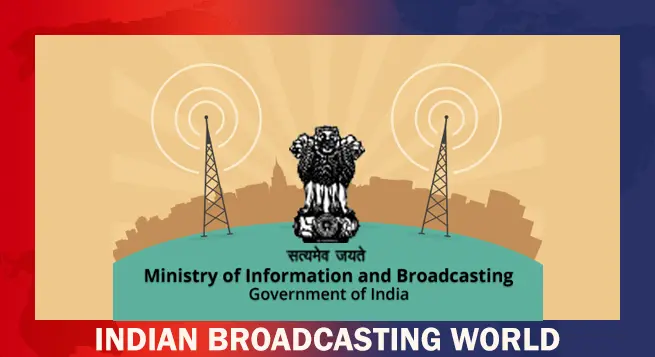 New draft of B’cast Bill proposes to regulate news influencers
New draft of B’cast Bill proposes to regulate news influencers 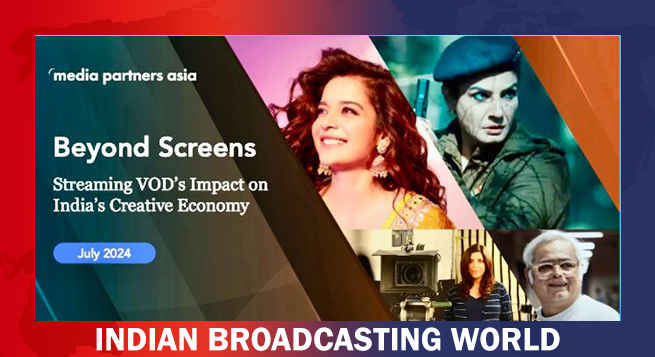 Premium online video to fuel 50% new revenue growth in India: MPA report
Premium online video to fuel 50% new revenue growth in India: MPA report  Top performer India’s 2024-29 ad revenue to grow@9.0%: MPA
Top performer India’s 2024-29 ad revenue to grow@9.0%: MPA 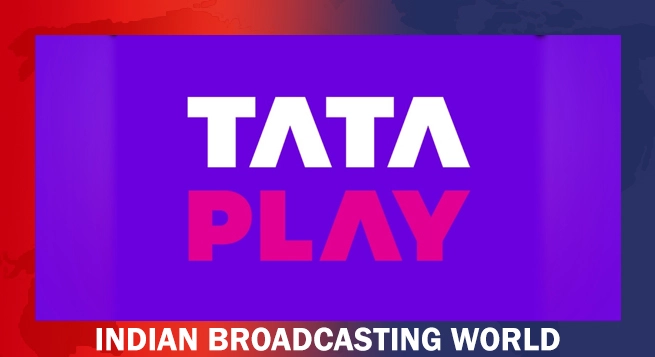 Tata Play’s revenue dips 4.3% to Rs 4,304.6 cr in FY24
Tata Play’s revenue dips 4.3% to Rs 4,304.6 cr in FY24  General Anil Chauhan joins News9 to honour 25 years of Kargil victory
General Anil Chauhan joins News9 to honour 25 years of Kargil victory 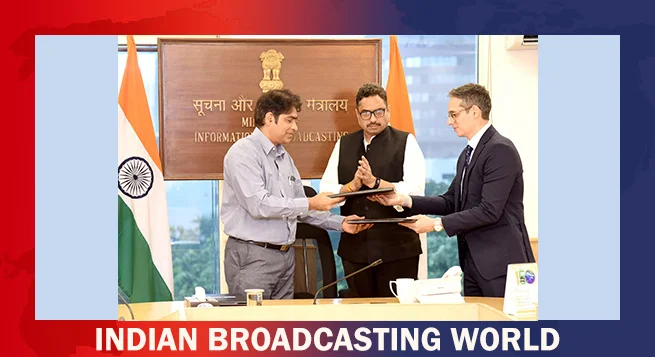 NFDC, Netflix partner to upskill voice-over artists in India
NFDC, Netflix partner to upskill voice-over artists in India 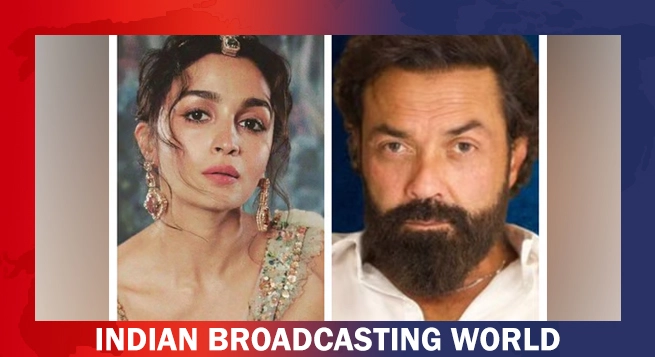 Alia Bhatt, Bobby Deol to clash in ‘Alpha’
Alia Bhatt, Bobby Deol to clash in ‘Alpha’ 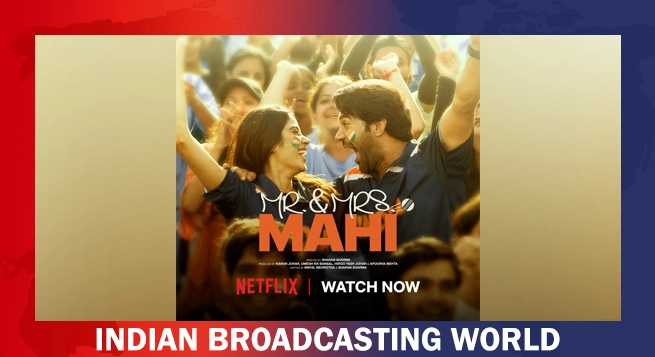 ‘Mr. and Mrs. Mahi’ now streaming on Netflix
‘Mr. and Mrs. Mahi’ now streaming on Netflix 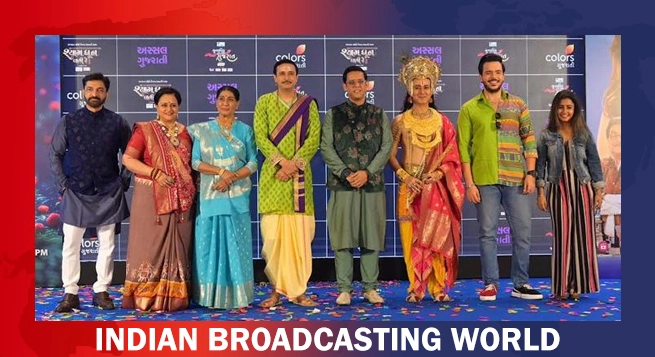 COLORS Gujarati announces ‘Assal Gujarati Nu Assal Entertainment’ with two new shows
COLORS Gujarati announces ‘Assal Gujarati Nu Assal Entertainment’ with two new shows 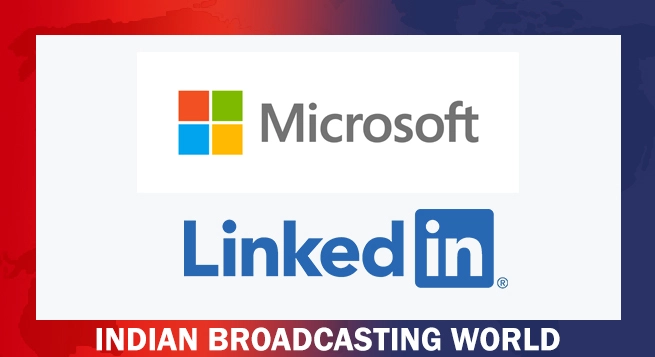 Microsoft’s LinkedIn settles advertisers’ lawsuit
Microsoft’s LinkedIn settles advertisers’ lawsuit  Netflix India announces new series ‘Rakt Bramhand – The Bloody Kingdom’
Netflix India announces new series ‘Rakt Bramhand – The Bloody Kingdom’ 


